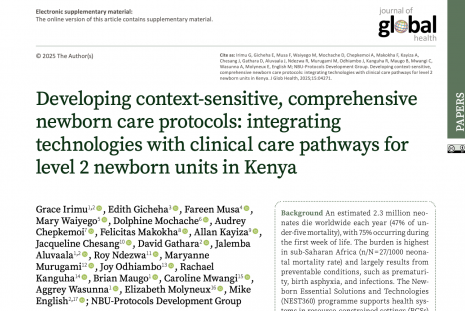This work is a result of dedicated effort under the leadership of Prof Irimu and dedicated team from UON Department of Paediatrics and Child Health ( Faculty and Registrars) and MOH /MOI/NEST 360/KEMRI Wellcome Trust.
Research News
Allan Kayiza, Wakaba Stephanie, Anjumanara Omar and Ezekiel M Wafula
Visceral leishmaniasis is caused by a protozoan parasite of the genus Leishmania, transmitted by sandflies of the genus Phlebotomus. It is one of the neglected tropical infectious diseases, though it has been endemic in many countries around the world. High morbidity and mortality have been reported in Sub-Saharan Africa,
including Kenya, attributed to misdiagnosis, late diagnosis, or medication lack. The cases we present, highlight the disease's characteristics and the variable individual to the conventional standard treatment.
This case series highlights two siblings in a family of 17 children; a 9-year-old boy and his 4-year-old brother.
They presented with a history of progressive abdominal swelling for about five months for the younger brother
and four months for the older. These symptoms were accompanied by fevers, easy fatigability, bilateral lower limb swelling, and a pruritic skin rash. Both siblings had pedal edema, massive Splenomegaly, and pancytopenia with severe anemia. The diagnosis of VL was made via a positive rapid test for VL. After which, both siblings were started on treatment with sodium stibogluconate and Paromomycin for 17 days. The 9-year-old gained full recovery, but his brother did not. So, the 4-year-old boy was started on therapy with liposomal amphotericin for six days, after which he gained full recovery. The father was tested and found negative for VL, while the rest of the family were then asymptomatic but not tested.
Conclusion: VL is treatable, especially if diagnosed and managed early enough. The serological tests' presence makes the diagnosis easy, and management started early, sufficient for better outcomes. Variation in response to treatment raises concern about whether we have a new species in this geographical area or drug-resistant organisms' development to the standard therapy. Importantly, screening family members in the same household and exposure is crucial, especially for children younger than five-years-old.

